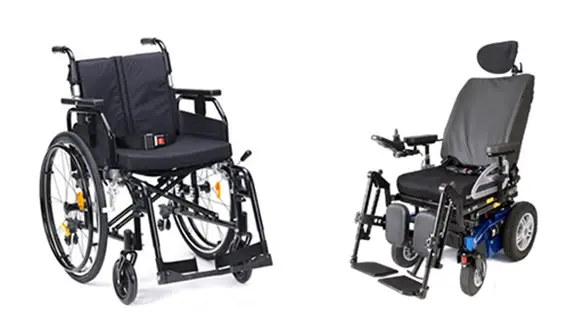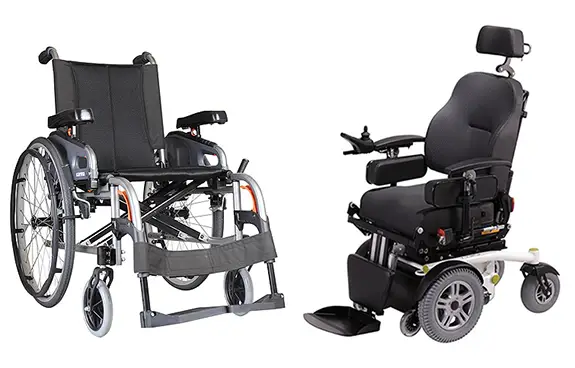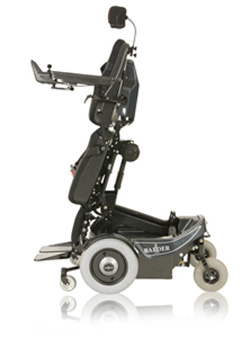
Disability and independence: NHS wheelchair services
Frances Leckie, editor of Independent Living, writes about the current state of wheelchair services and how they could be set for change. Frances is a “DH Guru” who’ll be sharing a monthly column on independent living!
#DHgurus
How many people in the country use a wheelchair? The short answer is that nobody really knows, because they aren’t keeping count. Estimates range from 700,000 to 1.2 million, but whichever number you take, it represents a lot of people depending on one of these highly variable, constantly improving mobility aids to go about their daily business.
NHS Wheelchair Services is where someone who needs a chair will go to be assessed and equipped with something to meet their needs – at least, that’s the theory. In practice, partly because there is no centrally co-ordinated wheelchair service, what you get and how much time it takes depends on where you live.
There are however, some very widespread experiences, including long waits, according to NHS England:
- 70% of wheelchair users wait more than three months for their chair
- 30% wait more than six months
- 15% wait more than 12 months
And waiting months for a chair is not the only problem. One in two wheelchair users can expect to develop a pressure ulcer at some stage in their life, and in many cases, sitting in the wrong wheelchair will be the cause. Carers and PAs can also suffer, with 90% of parents of disabled children developing musculoskeletal damage. Three quarters of carers have no training in how to avoid injuring themselves while assisting a wheelchair user.
In the last year, there have been two national Wheelchair Summits, followed by the launch of a Wheelchair Alliance, all with the aim of improving wheelchair services for users and their families. There are some encouraging signs. Not least an attempt to push providers towards a more “person-centred” service, which should mean that instead of wheelchair services considering nothing but the health needs of the person before them, they ought to be considering their life in the round, and what role the wheelchair needs to play. And rather than sending the hapless person from one specialised assessment to another, for different pieces of equipment, home, school, transport requirements, etc – how about one holistic assessment, saving everybody’s time and other resources?

This sort of approach requires joined-up thinking; better integration of health and social care (where have we heard that before?); assessors who are trained more broadly, rather than being focused on one particular piece of equipment or aspect of daily living; better information for users, so they can ensure that their uniquely-informed insight into their life is properly taken into account. CECOPS, the Community Equipment Code of Practice Scheme, which already provides a way of measuring quality in provision of disability equipment, has now developed a code of practice drawn up specifically for wheelchairs: If adopted by providers, this could help improve the standard of wheelchair services, in a consistent and measurable way.
Meanwhile, if you need to deal with NHS wheelchair services this week or next month, what can you expect? And what can you do yourself to ensure that you make the most of what is available?
Once you are referred to your local wheelchair service, you will invariably have to wait several weeks for an appointment. So make sure that you keep it, or let them know straightaway if you aren’t able to, so that it can be rescheduled. The assessment will most likely be carried out by an occupational therapist, physiotherapist or perhaps a GP. A “rehabilitation engineer” who specialises in wheelchairs and seating should also be involved. To get the best from your assessment:
- Get there on time: plan the journey, pre-book a taxi if necessary.
- It’s a good idea to take someone with you – either a friend, PA or carer, or even your own therapist. It helps with making a decision not to feel that you’re on your own.
- Most wheelchair services will make an assessment visit to your home if you can’t get to the centre, but it is better to go to them, if you possibly can, as you will then be able to see and try out a wider range of chairs.
- Take your existing wheelchair, if you have one, and any accessories with you. If it is a power chair that is more difficult to transport, let them know quickly, so that they can help with arrangements.
- If you use a hoist for any transfers, take the hoist sling along with you.
- Given that there may be waiting around involved, and there probably won’t be a convenient coffee shop, it’s a good idea to make sure that you have water, snacks and any medication that you need to take regularly.
- Let the assessment centre know if you will need help while you are there, for example with going to the toilet.
When you have been assessed, you will be offered either a basic wheelchair, powerchair, or postural seating system that meets your needs, or alternatively, a voucher which you can use towards paying for more fully-featured equipment that you might prefer – as long as it also meets your clinical requirements. It is extremely unlikely that wheelchair services will provide a chair that goes beyond the minimum you require – functions such as an elevating seat or standing facility, which can be incredibly useful, are sadly beyond the resources allocated.
If you decide to go for a voucher, there are two possibilities. The Partnership option allows you to choose a chair from a slightly wider range, approved by the NHS. You pay the difference in the cost, to an agreed supplier, but the chair remains the property of NHS wheelchair services. This means that they are responsible for maintenance and repairs.

The independent option gives you a voucher for the cost of the chair the NHS would supply you with, together with some extra money to cover the maintenance and repairs they calculate will be needed in its lifetime – generally five years. If you choose the independent route, the chair that you buy (from an agreed supplier) can be of any design, brand or value, as long as it meets your needs. It is your property, and you are responsible for the costs of insurance, maintenance and repair, whether this amounts to more or less than was calculated in the voucher.

You can also use the voucher to rent a wheelchair on a long-term basis. In this case, the monthly rental payment also includes insurance, and provision for maintenance and repairs, making it a good choice for anyone who likes to know exactly where they are financially, without the risk of an unexpected repair bill suddenly arising.
Any specialist postural seating or pressure relief elements are provided by the wheelchair service, and do not form part of a voucher.
Not every wheelchair service provides vouchers – as mentioned at the beginning of this article, they are organised on a local basis, with different criteria and options, depending on local decision makers.
It is expected that a chair will last for five years, but if your needs change in the meantime – if you have a progressive condition, for example – you can ask for a reassessment, and have the chair adapted to suit.
If you think that wheelchair services could be improved, and you would like to feed into the Wheelchair Alliance project in order to encourage change, you can contribute your ideas and experiences by contacting them on Twitter, #MyWheelchair
By Frances Leckie
Check out…
• Disability and independence: Occupational Therapy services
• Disability and gadgets: using technology for accessibility
• Wedding in a wheelchair
Get in touch by messaging us on Facebook, tweeting us @DHorizons, emailing us at editor@disabilityhorizons.com or leaving your comments below.
i was given an NHS wheelchair 9 years ago and the entire process was marvelous. as i lived in a rural area and am without transport it was delivered to my home. it’s lightweight yet sturdy with amazing bearings. they even made me a pink one. the first pink ADULT chair they had made. it’s still going strong
I waited over 17 months to get the power chair I needed, and for those months, I was literally a prisoner in my own home. Before that, I had a wheelchair in terrible need of repair, and despite my ringing my local wheelchair clinic every other week for THREE YEARS, it took SIX to get a new chair. I only got a new wheelchair because the wheelchair mechanic wrote a note of complaint on my behalf that I had been forced to use something that was beyond all economic repair for years, and because my needs weren’t being met, my spine is now damaged irreversibly.
Helpful tip from a regular customer of wheelchair services, regarding hoist slings. Take it with you to your appointment if it’s custom-made for you, but if it is a standard, off-the-peg sling, it’s worth checking with the clinic beforehand whether they have one like it – if so, that’s one less thing for you to lug around!
It’s worth noting that most NHS services have an 18 week target to meet for providing a chair. It’s therefore not very useful to quote that “70% of wheelchair users wait more than three months for their chair”, as many of those may be waiting 12-18 weeks (which would be sufficient by the NHS’s standards). I know this article has only quoted the statistics from the NHS IQ document, but it’s not the most helpful statistic, and as the Wheelchair Leadership Alliance have pointed out recently, there are actually very few reliable statistics about the wheelchair services yet. Hopefully this will change soon, so that we don’t continue to read misleading facts.
Advice needed…
I’m not due for a wheelchair appointment until another year. I am taking my driving test next month. If I pass I will have to take the wheels off my chair and lift the frame into the car and place it next to me. I can do this independently but it is a struggle. I would hugely benefit from having a frame with a back that folds. I discussed this with wheelchair services but they said I couldn’t change for over a year. They have agreed to see me after arguing but I would like to know if there is any chance of changing my chair early?